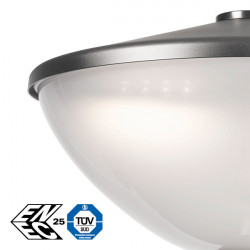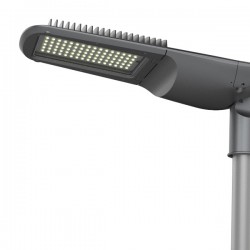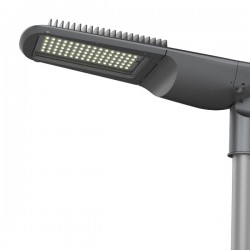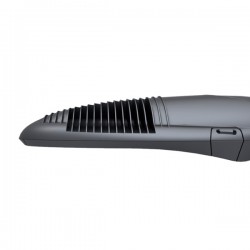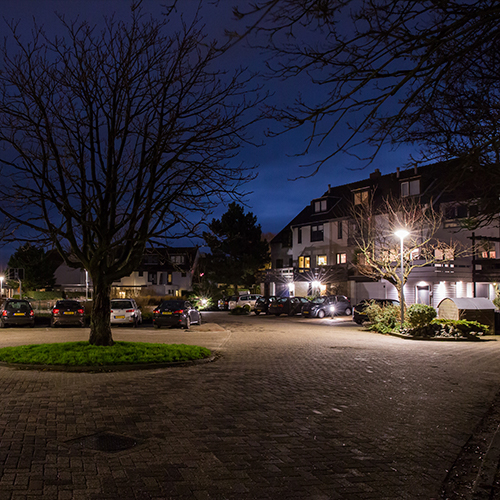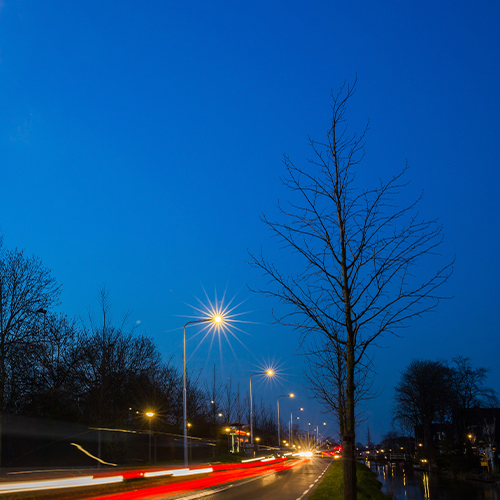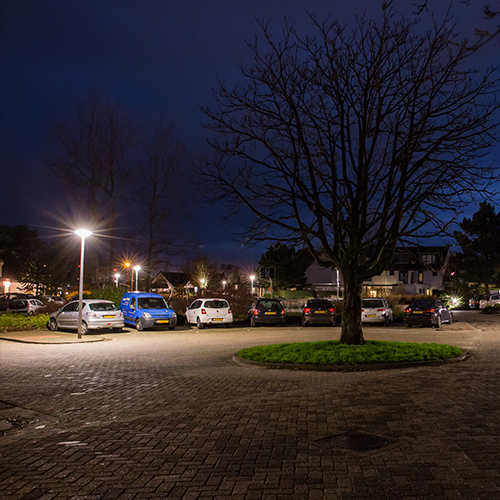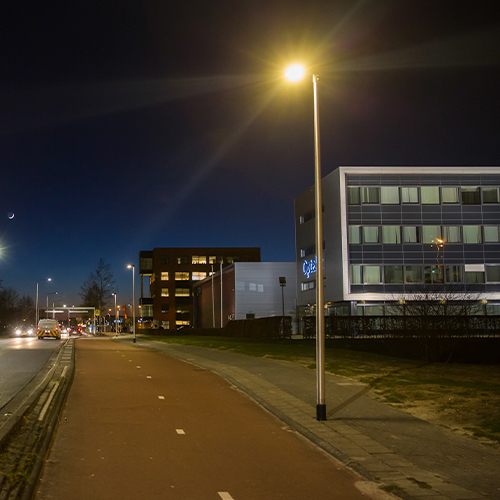Residential area lighting
Lighting in residential areas is of vital importance. This lighting is used to ensure the proper use of outdoor public spaces, even in the dark. It not only enhances traffic safety but also provides social safety. The well-being of people in outdoor spaces and residential areas is a central concern. It's essential that individuals feel comfortable and can function well in these areas, and Prolumia's residential area lighting is exceptionally well-suited for this purpose.
Benefits of LED lighting for residential areas
LED residential area lighting is increasingly being employed to illuminate residential neighborhoods, bike paths, main roads, walkways, parking lots, areas around public buildings, and industrial premises. Prolumia introduces the next generation of residential area lighting. From areas where pure functionality is key to more public spaces where aesthetics also matter, Prolumia offers a wide range of fixtures to provide appropriate lighting solutions for every area. Some advantages include:
- Significant energy savings
- Reduced maintenance costs
- Long lifespan (>60,000 hours)
- Improved optical performance
- No mercury or other heavy metals
- Enhanced color rendering

Standards for LED residential area lighting
To ensure safety and visibility, various NEN standards have been established by the European Union. Since lighting in residential areas affects people, animals, and plants, all fixtures must meet a large number of these standards.
In general, LED residential area lighting should meet the following:
- NEN-EN 50102: Protection degrees of enclosures for electrical equipment against external mechanical impacts (IK code). IK06 is sufficient for a light height above 4 meters. If it's lower than 4 meters, the class should be at least IK08.
- NEN-EN 50110: Operation of electrical installations.
- NEN-EN 60529: Protection degrees of enclosures (IP code). It should be at least IP54.
- NEN-EN 60598-1: Luminaires - Part 1: General requirements and tests.
- NEN-EN 60598-2-3: Luminaires - Part 2-3: Particular requirements for road and street lighting luminaires.
- NEN 1010: Safety requirements for low-voltage installations.
- Equipped with a CE marking.
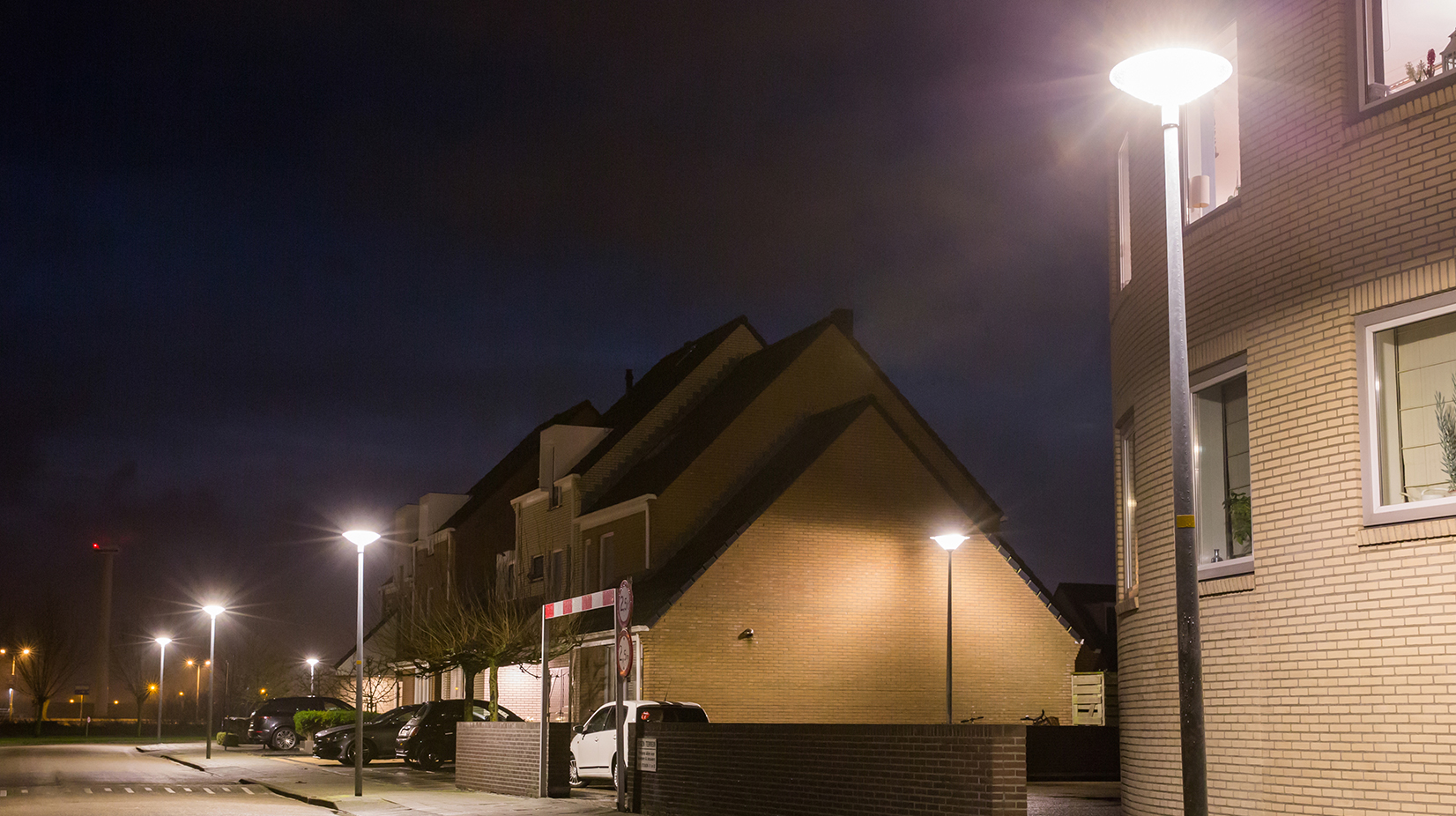
RESIDENTIAL AREA LIGHTING
Residential neighborhood lighting certainly does not need to shine at full power. People need to feel comfortable, so dimmed lighting in residential areas is usually sufficient. Not only is this more pleasant for visibility, but this way energy consumption and CO2 emissions are also reduced. Prolumia has various luminaires in its product range where the illuminance can be adjusted as desired. An additional advantage of dimmed residential lighting is that maintenance of the LED lighting needs to be carried out less regularly. This results in lower costs.
Lighting quality in residential areas
Lighting in residential areas plays a significant role. It ensures traffic safety, social safety, and recognition. Because it is so comprehensive, specific guidelines have been established for lighting within built-up areas.
These guidelines include:
- Light level, which refers to the amount of light in residential areas. On average, municipalities choose to keep lighting in residential areas at approximately 70% brightness.
- Uniformity. An even distribution of light is essential for a sense of calm, as opposed to uneven light patterns.
- Prevention of light pollution. Light mustn't cause disturbances to people, animals, or plants.
- Minimization of light spill, which refers to how much light is emitted upwards from the fixture. LED residential area lighting should be downward-facing to reduce light spills.
- Light color. The well-being in public spaces is crucial, and it's closely related to the right light color. Almost all municipalities opt for warm white light, i.e. 3000K.
Lighting Calculation for Residential Area Lighting
To meet the required standards for your street lighting, a professional lighting plan is essential. This plan tells you what type of fixtures and how many of them are needed for your area. This is a challenging task, especially for a large-scale project such as a residential area. Prolumia can assist with this. We use the Relux simulation program for our lighting calculations.
Within ten business days, you will receive a non-binding proposal, including the Relux lighting calculation linked to a quotation. This proposal will explain the layout of the residential area lighting and the reasons behind the choices made. Additionally, it will elaborate on the achieved light level, by the legally established NEN standards, which define how many lux should be delivered on a specific surface.


